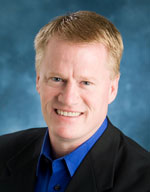Column: NHL’s “Original Six” Were Neither
Hard-core hockey fans – and really, are there any other kind? – are all pumped up this week because on Wednesday night, the Chicago Blackhawks scored in overtime to win their first Stanley Cup since 1961. And that harkens back to the era of the so-called Original Six.
But if you’re not a hard-core fan, you probably don’t know what Original Six means. The Hard-Cores will be quick to tell you the Original Six is code for the first six NHL teams. They’re easy to remember, if you think of them in pairs: New York and Boston, Montreal and Toronto, Detroit and Chicago.
Hockey fans revere the Original Six the way basketball fans gush about the Celtics-Lakers rivalry and classical music buffs go on about Bach, Brahms and Beethoven. The Original Six has become such a popular catch-phrase, it’s now on a baseball cap, featuring all six team logos. It outsells the caps of most individual teams.
I’ve always suspected the Original Six is such a hot catch-phrase because, for the Hard-Cores, it doubles as a secret password. If you know what the Original Six is, you must be Hard-Core. And if you don’t, you ain’t.
The elusive dream of all Hard-Core hockey fans is another Stanley Cup Final between two Original Six teams. That hasn’t happened since in 1973 1979.
That’s why, when the Red Wings got knocked out of the playoffs by the San Jose Sharks, the Hard-Cores figured, Hey, no problem, the Blackhawks will win the West – which they did.
Now all the Hard-Cores needed was an Original Six team to make it through the Eastern Conference, where four Original Six teams play. But the Philadelphia Flyers came from behind to upset the Boston Bruins, and then took out the legendary Montreal Canadiens, too. And that meant just one Original Six team left standing: The Chicago Blackhawks.
It was no small consolation to the Hard-Cores that the Blackhawks beat Philadelphia in overtime Wednesday night, to notch another Stanley Cup for the Original Six this year. But there’s a catch: The Original Six weren’t original, and there weren’t even six of them.
As George Will once wrote, the best cure for nostalgia is a little history.
When the NHL started in 1917, the league had just five teams, including Montreal and Toronto – the Original Two, if you will. But they also had teams like the Quebec Bulldogs, which became the Hamilton Bulldogs, which became … extinct.
All told, in the NHL’s first 25 years, the league launched 12 teams, but had to move four and kill six, including such bottom feeders as the St. Louis Eagles, the Pittsburgh Pirates and the Philadelphia Quakers – who, I’m guessing, were not allowed to fight.
Finally, in 1942, the NHL had boiled the league down to what we now call the Original Six. And that’s how it stayed for the next 25 years, until the NHL expanded again in 1967, ultimately building the current 30-team league.
So the next time you hear some Hard-Core fan gushing about the Original Six, you can one-up the poor guy by saying, “Original Six, eh? Pretty cool. But do you know what would be even cooler? If the Original Six were either.”
While your hockey pal is trying to figure out what you just said, you can walk away with the smug satisfaction of knowing you just bested a Hard-Core – and you didn’t even have to buy a hat to do it.
About the author: John U. Bacon lives in Ann Arbor and has written for Time, the New York Times, and ESPN Magazine, among others. His most recent book is “Bo’s Lasting Lessons,” a New York Times and Wall Street Journal business bestseller. Bacon teaches at Miami University in Oxford, Ohio; Northwestern’s Medill School of Journalism; and the University of Michigan, where the students awarded him the Golden Apple Award for 2009. This commentary originally aired on Michigan Radio.




